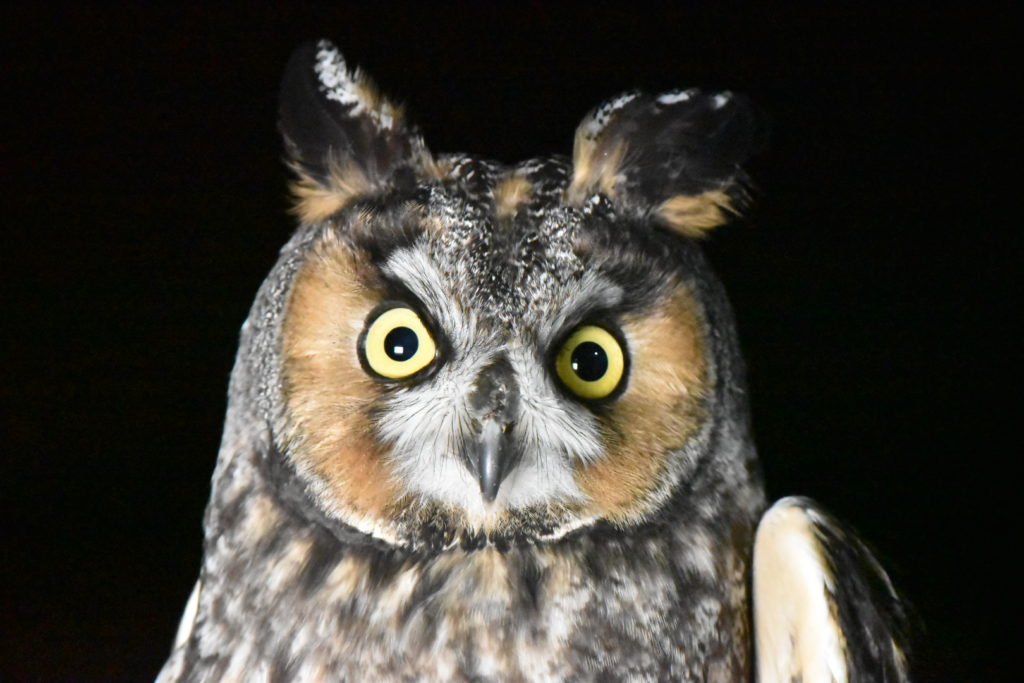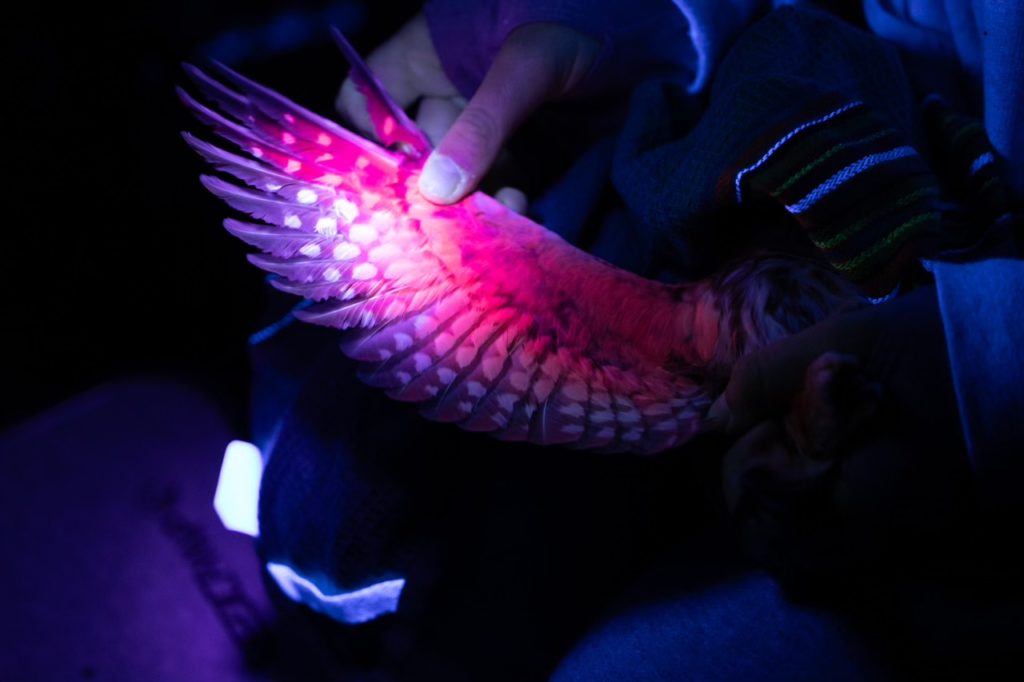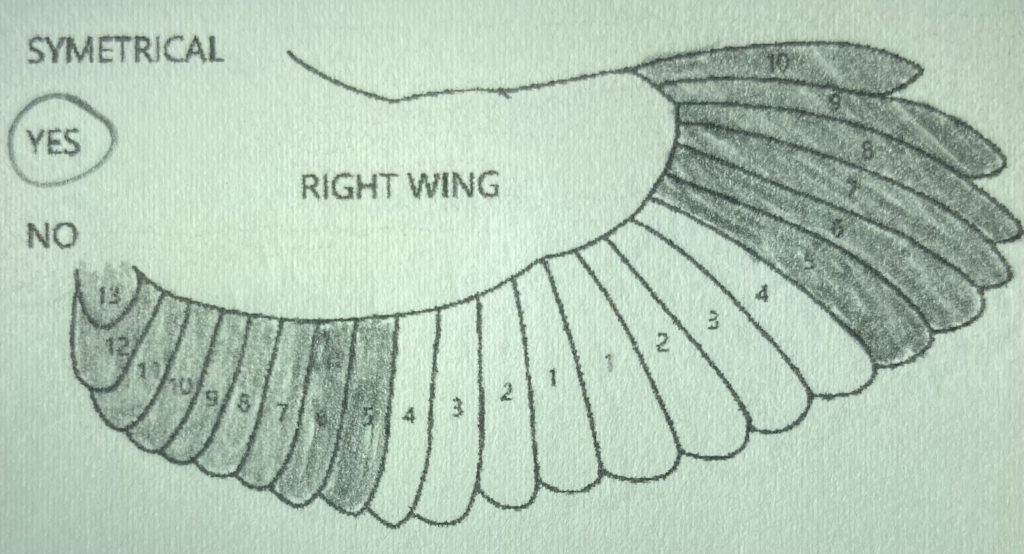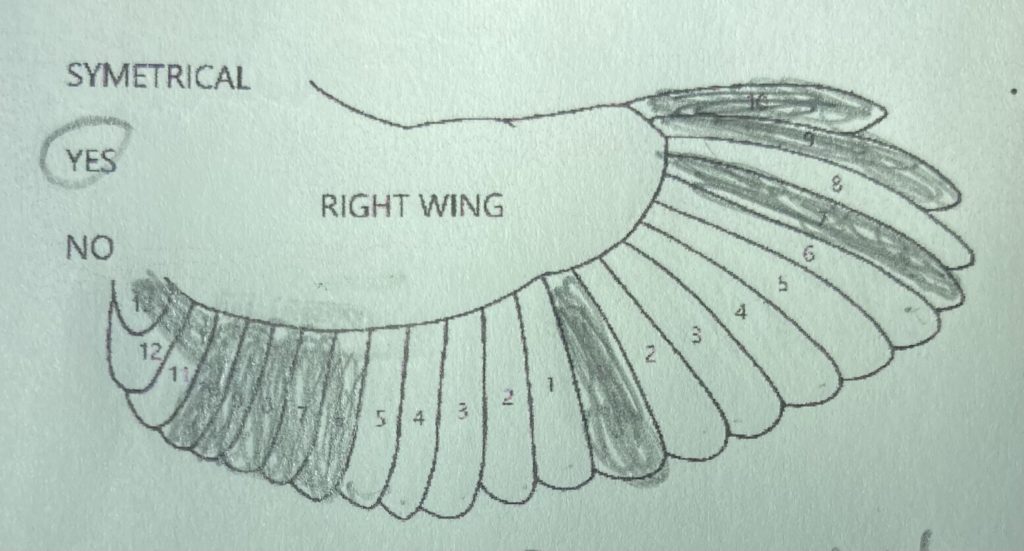We are at a total of 389 Northern saw-whet owls, 11 Barred owls, and 5 Long-eared owls! We are blasting Barred owl records out of the water this year, having caught 4 more than MSRW’s previous high of 7. Weather again has been problematic here at Pte. LaBarbe and we have been unable to have the nets open for very long each night. Hopefully we will have one or two good nights before we wrap up!

Alright, let us dig into aging saw-whet owls! Owls are fairly unique in that they have a compound called porphyrin in their feathers. Porphyrin gives owls their brownish coloration, but it also glows pink under a black light. Porphyrin breaks down in sunlight, so as a feather ages it becomes less and less pink. Owls, though, are nocturnal and roost during the day so their feathers are less exposed than say a thrush, or warblers may be. Owls’ nocturnal nature allows the porphyrin to last and be seen in their feathers for much longer and helps to give banders a good idea of the age of an individual bird.

Every year an owl will molt some flight feathers. They do this because feathers age and become weaker and having new stronger feathers is pertinent to maintaining flight. Saw-whet owls molt their new feathers in, in a unique pattern each year so we can age them using our black light. Here at MSRW we see three different patterns of molt that we use to age our saw-whets. The first is the hatch year, which means hatched just this past spring/summer and all their flight feathers are pink because they all just grew in. The second is the second year, meaning the bird hatched last spring or summer, which has a block of retained hatch year feathers in the middle of the wing with bright pink new feathers on the outer edges. Finally, the after second year, which means the bird is at least in its third year of life, is a mix of old hatch year/second year feathers and newly molted in pink feathers.


Tune in next week for our season totals!
